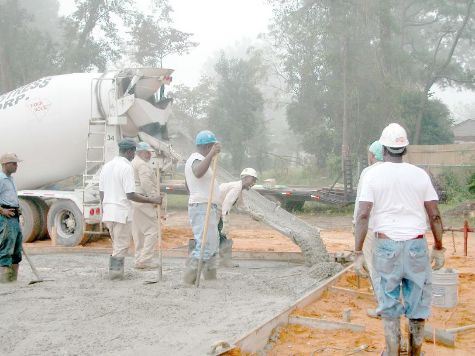San Clemente Concrete Foundation
A concrete foundation is supposed to last for a long time. The foundation ensures that structural shifting doesn’t occur. It provides better insulation and a moisture barrier. If your home has a sturdy foundation, it will be safe to live in.
If you need concrete foundation installations in San Clemente, call (949) 541-2077 and get free estimates.
Even though concrete is popular for its strength, it interacts differently with other foundation materials. Depending on your place of residence, the soil could greatly affect the installation.
Concrete Foundation Factors
Here is how different types of soils affect the concrete foundation.
- Clay – This can be easily recognized by its red color and a clumpy consistency. This soil type is feared by gardeners as it gets sticky when wet and will crack when dry. These are factors you need to consider when constructing a foundation as you don’t need frequent weather changes that can compromise the home. To ensure that your foundation remains stable, ensure that your clay soil has been fully compressed.
- Rock – Soil that has a high amount of granite and limestone is a good choice for bearing a foundation weight. But before you start the construction, ensure that the area has been well leveled. This will ensure that you avoid drainage issues in the future.
- Peat – This is a soil type that is commonly found in wet areas and consists of decomposed plants. Even though it isn’t hard to compress, the soil’s shape can easily change. When dealing with peat, you need to speak to a contractor about the different types of foundations.
Tips for Laying a Concrete Foundation
When constructing your dream home, there are several tips you should use:
Measure Depth
Ensure that you take your concrete foundation’s depth is around 3 feet beneath the soil. Start by taking the ground moisture. If the water content is high, it will need deeper digging.
Ground Preparation
Anything that interferes with digging and pouring of the concrete foundation should be removed. These include branches and rocks. Use a tool or excavator rather than a shovel so that you don’t spend hours digging.
Soil Compaction
To flatten soil and get rid of the air pockets, use a compactor tool. Move over the foundation with a compactor several times and ensure that you keep adding soil until it becomes level. Add a layer of sand or gravel so that the concrete isn’t affected by the concrete being poured.
Install Footings
Rebar footings should be used to ensure that the soil doesn’t crumble. Speak to engineers to determine the number of footings required to ensure safety and stability.
Mixing and Pouring Concrete
To get the right consistency, use the right amount of water. A straight edge tool should be used to pour the foundation and ensure that the concrete remains level. This should be made smooth when wet to enable the product cure.
When building a foundation for your home, you can trust the best concrete contractor at San Clemente Concrete to provide you with amazing results.
You can reach us on (949) 541-2077 and have free estimate.

